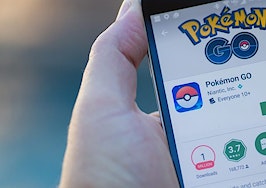- Compare your response rates with industry averages to determine what is working in your market.
- Conversion rate: the rate at which you can convert a lead to an appointment and then into a sale.
- To calculate the success rate of a marketing strategy, multiply the response rate by the conversion rate.
As we draw close to the end of the year, many of us will start to assess our marketing performance. It’s easy to compare sales, revenue and number of listings.
But how do you measure the effectiveness of your marketing strategies? Do you know where your business came from and how much you spent to get it?
It’s not easy, but keeping a close eye on where you’re putting your marketing dollars can have a huge impact on your business. You don’t need to implement the latest SEO strategy or learn more about inbound marketing or social media.
My team has decreased our cost per sale and increased our marketing ROI by paying attention to a few key performance indicators.
It’s easy to get overwhelmed with likes, impressions, clickthrough rates, keyword performance and the many other metrics that come along with today’s complex and multifaceted marketing strategies.
That’s why it’s important to boil it down to what you need to know and then track your results to judge the impact on your bottom line.
Response rate
Divide the number of inquiries you received from each marketing strategy by the total number of people you targeted with that strategy to get your response rate.
So, if you mailed out 2,000 postcards and received three phone calls, your response rate would be 0.15 percent.
Different strategies have different average response rates.
For example, according to the Direct Mail Association’s 2015 Response Rate Report, direct mail achieves a 3.7 percent response rate on average with a house list and a 1 percent response rate with a prospect list.
You can compare your response rates with general or industry averages and across strategies to determine what is working or not working within your market.
[Tweet “Compare your response rates with industry averages to determine what is working in your market.”]
Conversion rate
Your conversion rate is the rate at which you’re able to successfully convert a lead to an appointment and an appointment into a sale.
If you converted five of 100 internet leads, that would be a 5 percent conversion rate.
Looking at the conversion rates of your marketing strategies can give you an idea of the quality of leads you’re receiving and will also keep you accountable and focused on following up and closing the leads you paid for.
[Tweet “Conversion rate: the rate at which you can convert a lead to an appointment and then into a sale.”]
Success rate
Calculate the success rate of a marketing strategy by multiplying the response rate by the conversion rate.
So, if you captured 20 percent of the visitors to your website and turned 5 percent of them into sales, your overall success rate for website traffic or pay-per-click ads would be 1 percent.
Looking at your success rate for each source of business gives you the information you need to make better decisions year-over-year.
[Tweet “To calculate the success rate of a strategy, multiply the response rate by the conversion rate.”]
Measuring and mastering a few key strategies can be much more effective than throwing money at every new opportunity that comes your way.
As you look back and move to plan for 2017, track, measure, analyze and adjust what you’re already doing before adding on the next hot marketing tool or technology.
Brandon Doyle is a Realtor at Doyle Real Estate Team — Re/Max Results in Minneapolis. You can follow him on Twitter.







